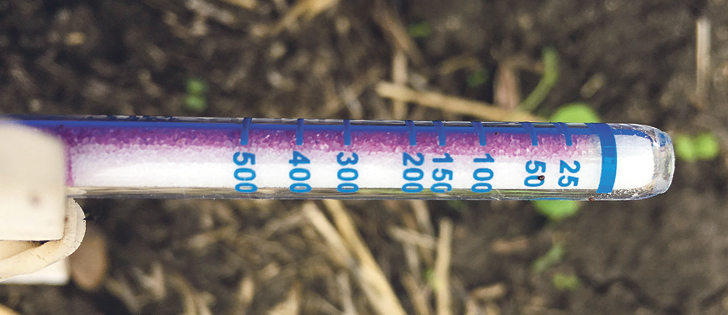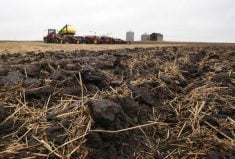For 40 years, soil scientists have recommended that farmers apply urea by banding two to three inches deep, to reduce losses to the atmosphere.
But when shallow-seeded crops like canola are planted on the same toolbar used to apply urea, the depth disparity can be tricky to achieve.
As well, the extra power and time needed to apply the urea at three inches compared to 1.5 inches or less for canola is significant, so the recommended best practice is not necessarily common.
While growers might not have bothered with the extra inch of depth for urea, they knew there was a cost. Part of the nitrogen was gassing off into the atmosphere (volatilization) and was unavailable to help the crop, which also meant that some money was wasted. But now these growers may have cause to rejoice.
Read Also

Bunge’s crop mix is changing
Bunge has predominantly been a soybean processing firm, but that’s about to change after the merger with Viterra with softseed processing and grain merchandising gaining ground.
Adam Gurr with Agri Truth, an agronomic research company in Brandon, was worried about volatilization losses at his farm.
“Through the winter of 2015, there was a lot of talk out there about the potential of nitrogen loss relating to shallow-banded urea,” he said.
Gurr uses a Hawk seeder with the fertilizer knife four inches deep, but once the soil is packed and some soil is displaced off to the side, the fertilizer is under only 1.5 to two inches of soil.
“So I thought there was maybe a potential for us to be losing nitrogen. So we wanted to see if we could test for that. John Heard with Manitoba Ag got us set up with these dositubes,” Gurr said.
Dositubes are about the size of a small test tube and can be used to detect ammonia nitrate.
Gurr installed the tubes where he banded in urea and monitored the readings.
“We couldn’t pick up any NH3 nitrogen volatilization losses. We monitored it for a month,” he said.
Beyond the areas where Gurr banded in urea, two checks were also monitored: an area with no applied nitrogen and an area with broadcast urea.
Gurr again tested for nitrogen volatilization losses from his banded urea in 2016 .
“We did it in canola and conditions were probably more conducive for volatilization losses in 2016 because we were so dry in the spring, and our nitrogen rate in canola was another 30 percent higher. And again we couldn’t detect any nitrogen loss,” he said.
In a separate 2016 trail, he compared Agrotain urea to straight urea, and he said he again could not detect any loses with the dositubes.
“Last year, it stayed at zero, we had nothing. The first year we could detect something. Like one or two (dositubes) would show a little bit (of losses), which would be around five parts per million. But to put that into perspective, the broadcast treatment might be 300 or 400 parts per million,” Gurr said.
“We concluded after those two seasons that there is probably not a lot of concern for that kind of nitrogen loss relating to our banding depth.”
Rigas Karamanos, a soil scientist who has documented nitrogen losses due to shallow banding in many research projects, said when urea or any fertilizer with urea in it is placed in a band, the pH level can be affected and that can lead to nitrogen losses.
“When you put (urea) into the bands what happens is it hydrolyzes, it becomes ammonium. But at the same time it releases carbonates. That raises the pH, and when the pH goes up, then the ammonium becomes ammonia and it goes up in the air,” he said.
He added that the soil compaction of Gurr’s drill likely helped reduce losses.
“If he compacts the soil on top of it, quite conceivably the ammonia cannot escape up into the air, so he’s OK,” Karamanos said.
Gurr agreed that compaction might help reduce volatilization.
Even though there was only two inches of soil on top of the fertilizer, “it would be a denser two inches then if you were just pulling the knifes through the ground at two inches,” Gurr said.
















